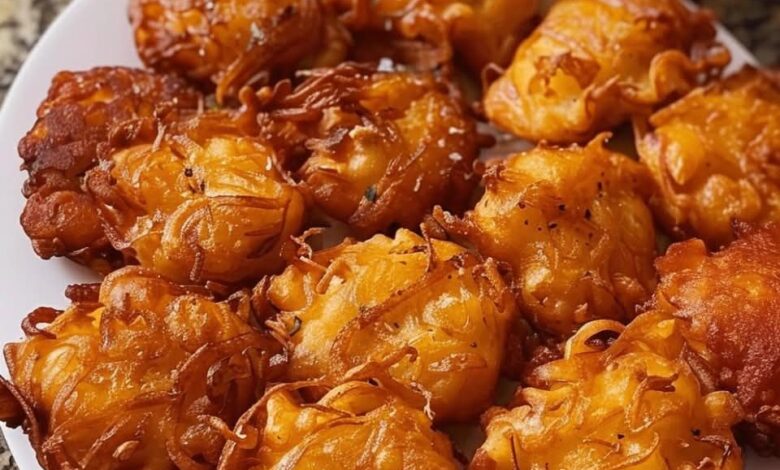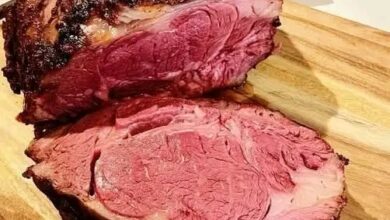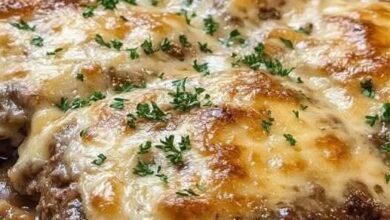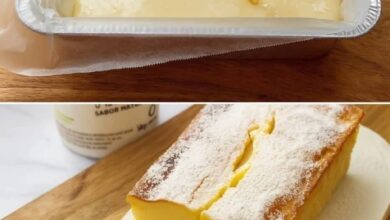A Taste of Humble Comfort: The Amish Onion Fritter

Of course! Here is a comprehensive, in-depth look at Amish Onion Fritters, presented as a complete culinary profile.
A Taste of Humble Comfort: The Amish Onion Fritter
In the heart of Amish country, where resourcefulness and simplicity are woven into the fabric of daily life, some of the most beloved foods are born from the humblest of ingredients. The Amish Onion Fritter is a quintessential example of this philosophy. It is not a fancy gourmet creation but a testament to the power of simple, honest cooking. These fritters are irresistibly golden-brown, boasting a crispy, fluffy exterior that gives way to a sweet, tender, and savory onion-filled center. Often enjoyed as a side dish, a snack, or even a light supper, they are a pillar of comfort food that warms the soul as much as it satisfies the stomach.
The Historical Roots: Frugality and Flavor
The history of the Amish Onion Fritter is intrinsically linked to the core values of Amish culture: thrift, community, and making the most of what the land provides. Onions were a staple in root cellars, and a simple batter of flour, milk, and eggs was a base for many dishes. By combining these readily available ingredients, Amish cooks created a dish that was:
· Economical: It stretched a few basic ingredients into a filling food for a large family.
· Versatile: It could be served alongside a main course, as an appetizer, or as a quick meal during a busy day of farming.
· Communal: Like many Amish foods, it’s often made in large batches to share at church gatherings, family reunions, and barn raisings.
This fritter is a direct descendant of a broader tradition of fritters found across many cultures, from Italian frittelle to Asian tempura, all showcasing the universal appeal of batter-fried vegetables.
The Formation: Anatomy of a Perfect Fritter
A perfect Amish Onion Fritter is a study in balance and texture:
1. The Crispy Shell: A thin, golden, and shatteringly crisp crust forms immediately upon hitting the hot oil, sealing in the moisture.
2. The Fluffy Interior: The batter between the onion pieces puffs up, creating a soft, cake-like, and airy crumb.
3. The Star Ingredient: The sweet, softened strands of onion are evenly distributed throughout, providing bursts of flavor and a tender bite.
4. The Flavor Base: The subtle seasoning of salt and pepper enhances the natural sweetness of the onions without overwhelming it.
Ingredients & Nutritional Profile
Ingredients (Serves 4-6)
· 2 large sweet onions (like Vidalia or Walla Walla), thinly sliced
· 1 ½ cups all-purpose flour
· 2 teaspoons baking powder
· 1 teaspoon salt
· ½ teaspoon black pepper
· 1 teaspoon paprika (optional, for color and warmth)
· 2 large eggs, lightly beaten
· ¾ cup whole milk (or buttermilk for a tangier flavor)
· Vegetable oil, for frying (canola, peanut, or sunflower oil work well)
For Serving (Optional):
· Apple butter, marinara sauce, ranch dressing, or a simple sour cream and chive dip.
Nutritional Snapshot (Per Serving, Approximate)
It’s important to acknowledge that as a fried food, this is an indulgent treat. However, its primary ingredient offers notable benefits.
· Calories: ~220-280
· Carbohydrates: ~30g
· Protein: ~6g
· Fat: ~10g (varies based on absorption)
· Key Beneficial Component: Onions are rich in vitamin C, B vitamins, and potassium. They are also a prime source of quercetin, a powerful antioxidant with anti-inflammatory properties, and prebiotic fibers that support gut health.
Method & Instructions: A Step-by-Step Guide
Method: Pan-Frying
This method creates fritters with a distinctive,craggy edge and a wonderfully textured crust.
Instructions:
1. Prepare the Onions: Peel the onions and slice them thinly. You can use a mandoline for even slices, but a sharp knife works perfectly. Place the sliced onions in a large mixing bowl.
2. Create the Batter: In a separate bowl, whisk together the dry ingredients: flour, baking powder, salt, pepper, and paprika (if using). This ensures the leavening agent is evenly distributed. In a small jug, combine the beaten eggs and milk.
3. Combine Wet and Dry: Pour the wet ingredients into the dry ingredients. Stir with a fork or whisk until just combined. A few lumps are perfectly fine; overmixing will lead to tough, dense fritters.
4. Fold in the Onions: Add the thinly sliced onions to the batter. Using a spatula, fold gently until every strand of onion is thoroughly coated in the batter.
5. Heat the Oil: Pour oil into a large, heavy-bottomed skillet (like a cast-iron pan) to a depth of about ½ inch. Heat over medium-high heat until the oil reaches 350-375°F (175-190°C). To test without a thermometer, drop a small bit of batter into the oil; if it sizzles vigorously and rises to the surface, the oil is ready.
6. Fry to Perfection: Carefully drop heaping tablespoonfuls of the onion-batter mixture into the hot oil. Do not overcrowd the pan. Fry for 2-3 minutes per side, or until deeply golden brown and crispy. Flip once during cooking.
7. Drain and Serve: Use a slotted spoon to remove the fritters from the oil and transfer them to a plate lined with paper towels to drain excess oil. Let them rest for a minute—they are molten hot inside!
8. Serve Immediately: Serve the fritters hot and fresh, with your chosen dipping sauces on the side.
For the Fritter Lovers: Tips and Variations
This recipe is a canvas for your creativity. True fritter lovers will enjoy these adaptations:
· The “Kitchen Sink” Fritter: Add ½ cup of shredded cheese (cheddar or Swiss), ¼ cup of cooked and crumbled bacon, or ½ cup of finely diced ham to the batter.
· The Garden Fritter: Mix in ¼ cup of finely chopped bell peppers or grated zucchini for extra vegetable goodness.
· The Spicy Kick: Add a pinch of cayenne pepper or a few dashes of hot sauce to the batter.
· Baking Alternative (Health-Conscious Lovers): For a lighter version, drop spoonfuls onto a parchment-lined baking sheet, spray with cooking oil, and bake at 400°F (200°C) for 15-20 minutes, flipping halfway, until firm and golden.
Conclusion
The Amish Onion Fritter is more than just a recipe; it is a story on a plate. It speaks of a culture that finds profound satisfaction in simplicity and community. While it may not be an everyday health food, it is a soul food in the truest sense. The process of creating these golden, aromatic patties is a rewarding one, filling your kitchen with an aroma that promises pure, unpretentious comfort. From their humble origins to your modern table, these fritters are a delicious reminder that the most memorable dishes are often the simplest ones, made with care and shared with joy.



